Sarah Ann Barnhart Daihl (1815-1887) about 1880
1860 Census
Husband George Daihl (also Deihl) was an "industrious farmer" according to his obituary. They'd recently bought a farm in the spring of 1859 in Southampton, Franklin County near Shippensburg, Pennsylvania (between Chambersburg and Harrisburg).
A landscape of mountains and valleys
Just north of the Maryland line
Confusing geography to the outsider
At least four of her boys joined the Union Army. When he was 17 Elijah McGee (Magee) Daihl enlisted in the 130th Pennsylvania Infantry in August, 1862. They soon moved on to Washington and marched to Maryland, where Elijah was unimpressed with the countryside. He wrote a note to his younger brother Reuben on August 28th.
"This Cutry is like a Desert I don’t know what the rebbl wants with it now nor what any body els wins wit it I wouldn’t live here for any thing but for to fight the rebbles for I intend to fight them till they kill me or els I kill them"
Within a few weeks they had killed him. He died in the Antietam Battle on September 17, 1862.
Sgt. David Fogelsanger Daihl (1839-1909)
Anna Margaret Daihl (1851-1928)
At home was younger sister Maggie who may have spent some of her time piecing a nine-patch quilt that descended in her family.
The scrappy nine-patch seems to have been pieced from the
family clothing
with some striped furniture chintz---or maybe an old-fashioned dress to alternate between the blocks.
She salvaged many scraps of this floral stripe.
Laura Cornelia Plasterer Alleman (1878-1952)
One can imagine that a simple nine-patch would have been the work of a young teenager during the Civil War when cotton prints were in rather short supply. The border is a foulard, a printed figure in a diagonal grid, which looks to be a wool/cotton combination fabric. The back is a single printed stripe, all prints fashionable for everyday garments in the 1850-1870 era.
A few of the prints may be 1870's or '80s indicating the blocks were
finished and set after the war. Do note that white stripe at the bottom
here. The print was first printed dark on white and then overdyed with
a brown, which did not reach all the way to the edge. Maggie included
it anyway.
Confederates burning railroad tracks in Franklin County
by Albert Waud, Library of Congress
Sarah Daihl and her neighbors must have been terrified by Confederate troops looting and threatening the farmers. Soon they heard news of the Battle of Gettysburg, a costly Union victory, where 170,000 soldiers fought for 3 days. One in every four soldiers suffered some kind of casualty and civilians in the weeks after the battle were occupied with dealing with the victims in makeshift hospitals and morgues.
Chambersburg, August, 1864
A year later the Southern army was back in the neighborhood. Nearly 3,000 troops took over Chambersburg, 10 miles south, threatening to burn the town unless a ransom of $100,000 in gold was paid. Their extortion failed and Brigadier General John McCausland's troops torched the town destroying 500 buildings.
Davis Wallace Plasterer (1846-1932)
Most of these portraits are from Find-A-Grave,
the early ones copied from a family album of the 1860s.
After the war Maggie married Davis Plasterer, probably a nephew of the Plasterers who lived on the next farm. A biography of Maggie's brother George notes that Davis was a "mechanic."
1870 Census
Anna Margaret married Davis in December, 1870
The Plasterers had six children; two died as young children. Laura Plasterer Allman (1878-1952) passed several quilts to her granddaughter Judy, among them a pair of cotton quilts that have survived.
Churn Dash quilt
The second quilt is in good shape, pieced of just a few prints
with the distinctive blue-violet figure here popular
in the 1870-1890 period.
"My grandmother (known as Cora) became the 'keeper' of these quilts. I don’t remember ever using them when I was a child. We had lots of quilts my grandmother made. I ended up with several of them. They’re well worn and loved. We slept under light weight cotton quilts in the summer and heavy woolen quilts in the winter. Those woolen quilts had cotton on the back, usually feed sacks, and woolens on the front." Judy Cloe
Judy's Great-Grandparents Davis & Anna Margaret Plasterer
lived well into the 20th century.
Maggie's mother Sarah died in 1887, just a few months after her husband George.
Much information is at Find-A-Grave.
Here is a link to Sarah Barnhart Daihl's file:
A less maudlin obituary.
Further reading:
Read more of the civilian perspective on the Battle of Gettysburg in Robert L. Bloom's "We Never Expected a Battle: The Civilians at Gettysburg, 1863" by doing a web search for the PDF.
I hope Cora or whoever made this quilt never noticed the triangle turned the wrong way. Judy is donating the pink and gold Churn Dash quilt to be auctioned in the September live auction at the American Quilt Study Group's seminar. We'll print out all this family history and package it with the quilt.


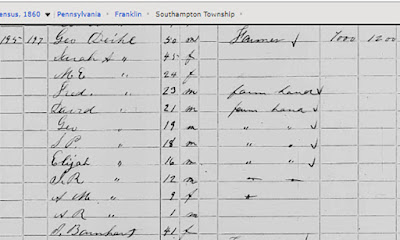

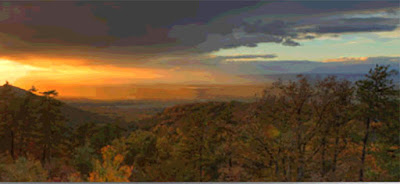












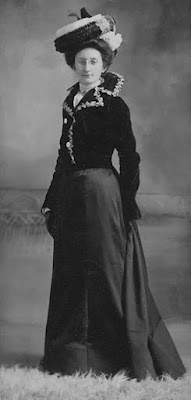

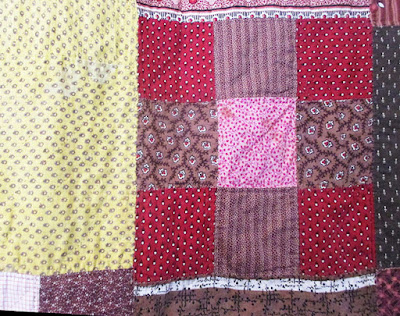

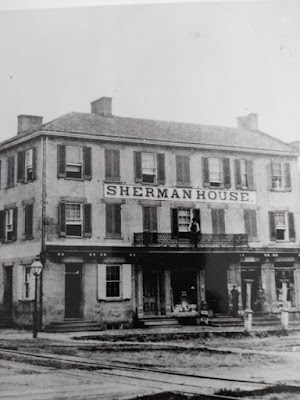



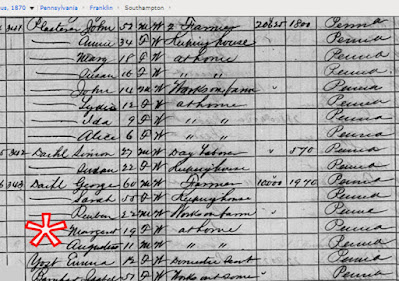
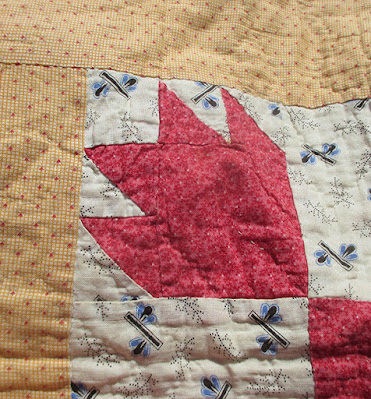




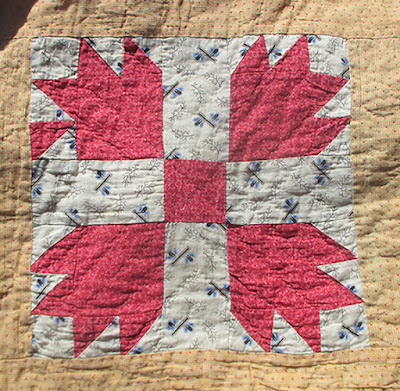
Love the scrappy wonkyness of the 9 patch quilt!
ReplyDeleteI too love all the rich scrappiness of the 9 patch quilt. However, the "churn dash " looks much more like a bear paw quilt.
ReplyDelete